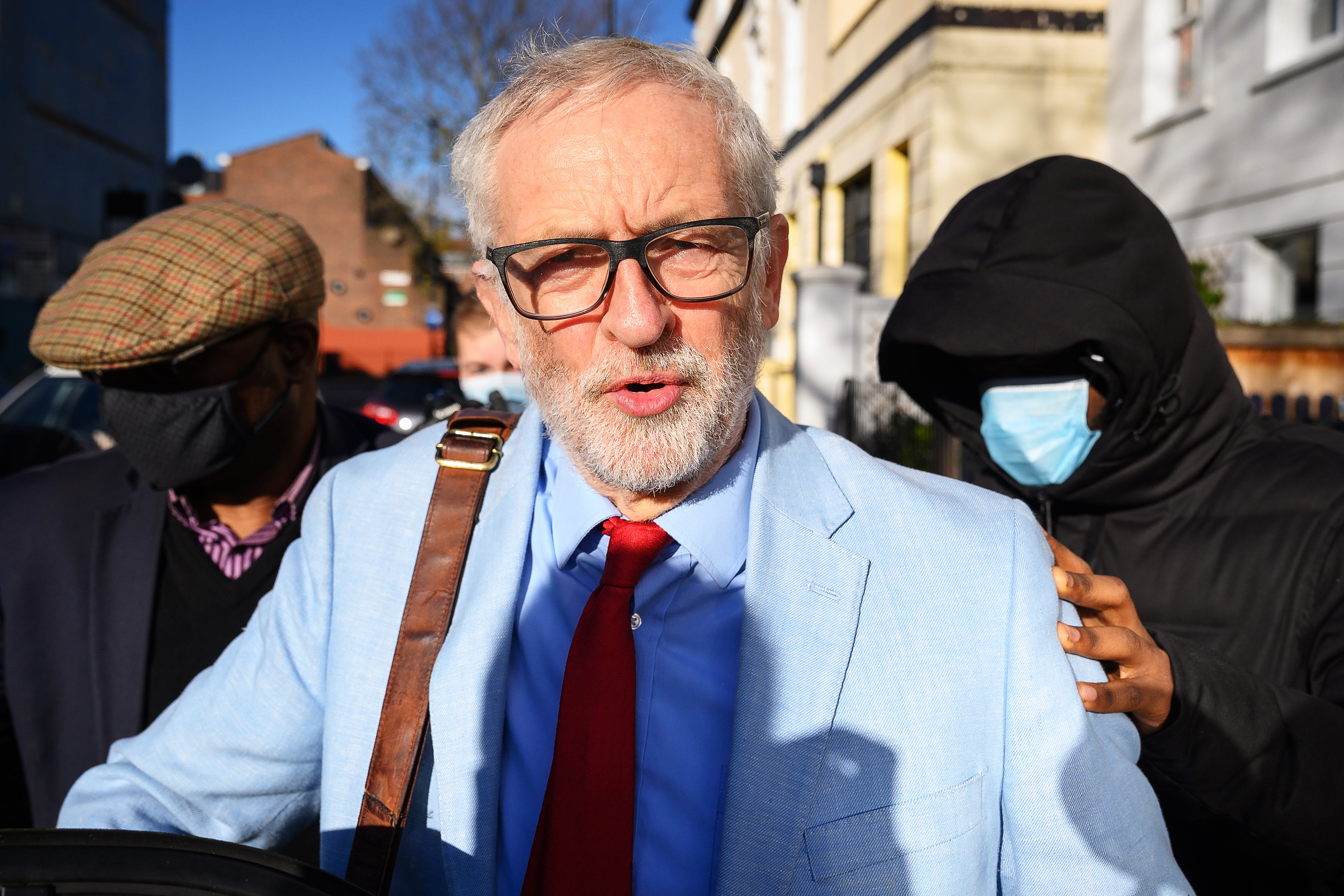Is this the bitter end or is there a route back for Jeremy Corbyn?
John Rentoul examines the history and the rules of withdrawing the whip from MPs to see if there is a way back for the once-revered former leader


All this has happened before, but mostly a long time ago. George Barnes, who was Labour leader 1910-11, and who served in David Lloyd George’s wartime coalition cabinet, had the whip removed in 1918 when the rest of the Labour Party left the coalition. He stayed on in government and held his seat at the 1918 election, which he fought on a “coalition coupon”.
Ramsay MacDonald, who was Labour leader and sitting prime minister when he formed the National government with the Conservatives in the economic crisis of 1931, was expelled by his party. Arthur Henderson, who succeeded him as Labour leader, disagreed with the decision and refused to sign the letter expelling him.
Michael Foot is the other Labour leader who had the whip removed, but that was in 1961, when he and four other Labour backbenchers voted against defence spending, 20 years before he became leader. The whip was restored to them after two years.
Jeremy Corbyn joined this disparate group on 29 October when he had the Labour whip suspended, as an automatic consequence of the suspension of his party membership – a decision that followed his unapologetic response to the Equality and Human Rights Commission report on Labour antisemitism. On Tuesday, his party membership was restored by a Labour disciplinary panel, but yesterday Keir Starmer used his authority as party leader to continue to deny his predecessor the right to call himself a Labour MP.
In the past, former leaders have lost the whip for being too “right wing”, cooperating with rival parties of government, while backbenchers have usually been disciplined for being too “left wing”. Stafford Cripps was expelled in January 1939 for advocating a popular front with the Communists; Aneurin Bevan in March for defending him. Both were readmitted after war was declared. Bevan had the whip withdrawn again for six weeks in 1955 for challenging the authority of Clement Attlee, the leader at the time.
More recently, Dave Nellist and Terry Fields had the whip withdrawn in 1991 for their links to Trotskyist group the Militant tendency; Ken Livingstone in 2000 for standing against the official Labour candidate for mayor of London; and George Galloway in 2003 for “bringing the party into disrepute” by urging British troops to defy orders in Iraq.
Corbyn no doubt sees himself in the “left wing” category and is fighting to have the whip restored, as it was to Cripps and Bevan; Livingstone, although he had ceased to be an MP, was also “restored” to run as the official Labour candidate for London mayor in 2004 and 2008. But it is harder to see a way back for Corbyn.
This battle is likely to end up in the courts – just as the members of the editorial board of Militant went to law to try to block their expulsion in 1983, giving a young barrister called Tony Blair a grounding in the intricacies of the Labour rule book.
Corbyn might appeal to the courts on the grounds that, under the standing orders of the Parliamentary Labour Party (PLP), he was entitled to three days’ notice of the withdrawal of the whip, and has the right to “make representations” to the Parliamentary Committee which governs the PLP.
But in the end, the withdrawal of a whip is a political question. Under PLP rules, the ultimate decision is for its members, that is Labour MPs, collectively. If Keir Starmer wants to keep Corbyn out, and I suspect he does, he will be supported by a large majority of Labour MPs. When Starmer says he will keep the withdrawal of the whip from Corbyn “under review”, I think he means he will review it in good time – that is, probably never.

Join our commenting forum
Join thought-provoking conversations, follow other Independent readers and see their replies
Comments